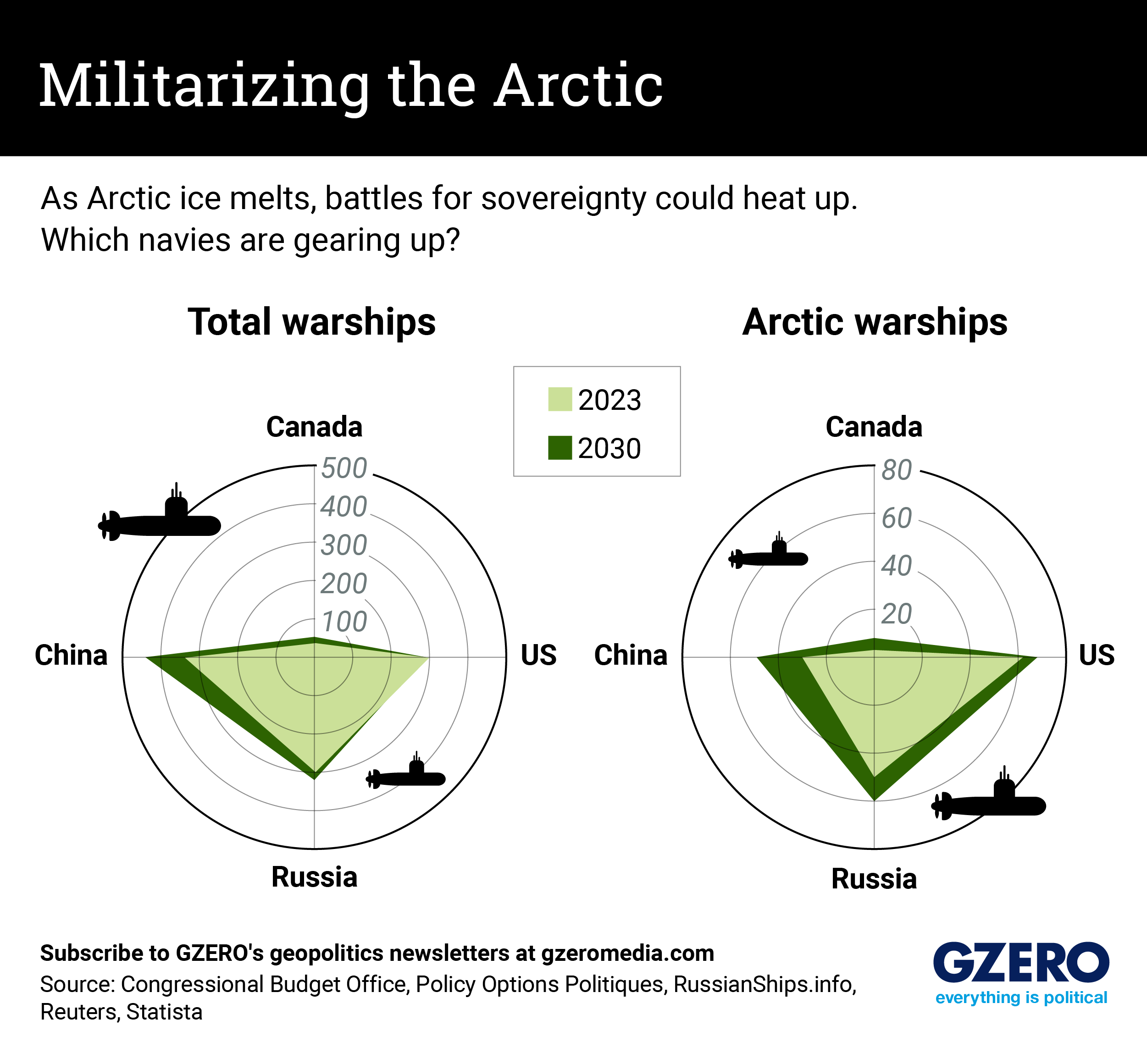May 25, 2023
In the coming decades, Arctic sea ice is expected to melt so much that the region will become traversable much of the year. While environmentally devastating, this will also mean more shipping access, resource extraction, and risk of conflict in the region.
Any future battles for sovereignty in the Arctic will rely on access to icebreakers and submarines. Canada has been trying with little success to grow its navy since it enacted its National Shipbuilding Strategy in 2010, and its plan to open an Arctic naval facility is nearly a decade behind schedule. The US, meanwhile, has a formidable submarine fleet, but its naval interests are spread worldwide, and Washington has not indicated any plans to make the Arctic a priority anytime soon. This means the US and Canada will need their NATO partners and allies to help keep an eye on security threats up north.
Arctic naval dominance, meanwhile, is shifting eastward. China looks set to outpace all other countries in naval growth through 2030. It is also joining major Arctic institutions, sending high-ranking officials to the region, and using its naval vessels to patrol Arctic waters – all signs that China has great polar power ambitions.
The strategic importance of the Arctic has also been on Russia’s radar. Over the past decade, Moscow has invested in around 40 icebreakers, giving them a mammoth fleet compared to other nations. While the US and NATO’s submarine fleets are expected to constrict in 2030, Russia is planning to grow its submarine capacity.
We take a look at Arctic-capable warships across these four countries.
From Your Site Articles
More For You
- YouTube
On Ian Explains, Ian Bremmer takes a look at the growing surge in global conflict and the ripple effects of so much violence, war, and armed struggle throughout the world.
Most Popular
Think you know what's going on around the world? Here's your chance to prove it.
French President Emmanuel Macron, German Chancellor Friedrich Merz, Ukrainian President Volodymyr Zelenskiy, U.S. Special Envoy Steve Witkoff and businessman Jared Kushner, along with NATO Secretary-General Mark Rutte and otherEuropean leaders, pose for a group photo at the Chancellery in Berlin, Germany, December 15, 2025.
Kay Nietfeld/Pool via REUTERS
The European Union just pulled off something that, a year ago, seemed politically impossible: it froze $247 billion in Russian central bank assets indefinitely, stripping the Kremlin of one of its most reliable pressure points.
Big global stories. Real conversations with world leaders. Our award-winning global affairs show, GZERO World with Ian Bremmer, goes beyond the headlines on the stories that matter most. Here’s a look back at the 10 most quotable moments from this year’s episodes.
© 2025 GZERO Media. All Rights Reserved | A Eurasia Group media company.
